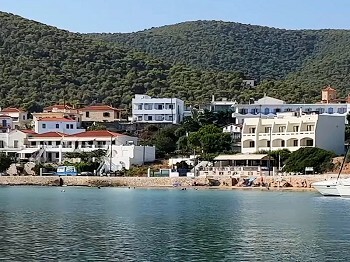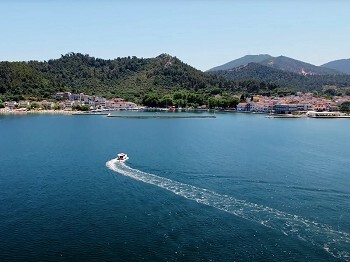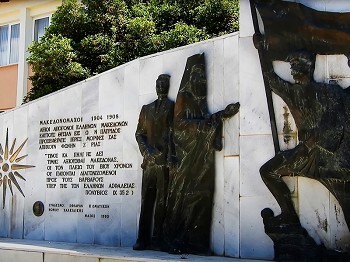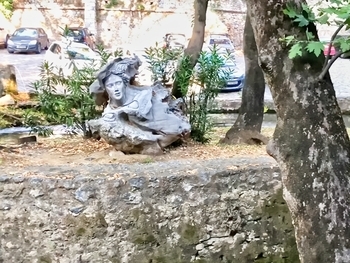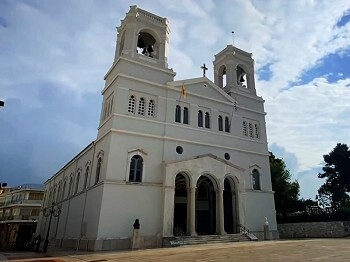
Antiparos Island, a tranquil escape in the Aegean Sea, boasts not only stunning landscapes but also a deep historical tapestry waiting to be explored. If you're a history enthusiast or just someone looking to delve into the cultural Heritage of this serene Greek island, you're in for a treat. This guide takes you through the must-visit historical sites on Antiparos, offering insights into their Significance and what makes each location unique.
We suggest for your stay:
Still Looking for the Perfect Stay?
1. The Cave of Antiparos: A Journey Through Time
The Cave of Antiparos, also known as the Antiparos Cave, is a fascinating natural wonder that has attracted visitors for centuries. Discovered in 1673, this cave has a rich history of Exploration and mythological Significance. As you descend into its depths, you'll encounter an array of stunning stalactites and stalagmites, alongside impressive underground chambers that have been formed over millennia. The cave’s historical allure is amplified by ancient inscriptions and carvings that provide a glimpse into the island's past.
Key Highlights:
Ancient inscriptions from notable figures, including the famous explorer Francesco Morosini.
Impressive geological formations that narrate the island’s natural history.
Panoramic Views of the island from the cave's entrance.

2. The Venetian Castle of Antiparos: A Medieval Fortress Overlooking the Sea
Perched on a hilltop in the heart of Antiparos Town, The Venetian Castle stands as a sentinel of the island’s medieval past. Constructed during the Venetian occupation in the 15th century, this fortress was designed to protect the island from pirate raids and other threats. The castle’s robust Architecture and strategic location offer stunning Views of the surrounding sea and landscape. Wandering through its ancient walls and towers, you can almost feel the echoes of history that resonate through its stone pathways.
Key Highlights:
Panoramic vistas from the castle's elevated position.
Ancient walls and towers that reflect the Venetian defensive Architecture.
The castle's role in the island's medieval history and its preservation.

3. The Church of Agios Nikolaos: A Testament to Byzantine Architecture
The Church of Agios Nikolaos, located in the main village of Antiparos, is a remarkable example of Byzantine Architecture and religious art. Dedicated to St. Nicholas, the patron saint of sailors, this church features beautiful Frescoes and intricate Iconostasis that Highlight the island's religious Heritage. Its serene Atmosphere and Historical significance make it a must-visit for those interested in Byzantine art and Architecture.
Key Highlights:
Beautiful Frescoes depicting religious scenes from the Byzantine era.
An intricately carved Iconostasis that showcases traditional craftsmanship.
The church's role in the island's religious and cultural life.

4. The Ancient Ruins of Despotiko: Exploring the Archaeological Treasures
Just a short boat ride from Antiparos, the uninhabited island of Despotiko offers a treasure trove of ancient Ruins that shed light on the island's historical importance. Despotiko was once a thriving center of the Cycladic civilization, and its archaeological site includes Remains of temples, public buildings, and ancient Artifacts. Excavations have revealed Artifacts that Date back to the Archaic period, providing invaluable insights into the region’s ancient past.
Key Highlights:
Remains of ancient temples dedicated to the god Apollo.
Artifacts and Pottery that reveal aspects of daily life in ancient times.
The island's historical role in the Cycladic civilization.

5. The Traditional Windmills: Icons of Antiparos' Agricultural Heritage
The traditional Windmills of Antiparos are more than just picturesque landmarks; they are symbols of the island's agricultural history. These Windmills, some of which Date back to the 18th century, were once essential for grinding grain and supporting local Agriculture. Today, they stand as charming Relics of a bygone era, offering a glimpse into the island's past agricultural practices and architectural styles.
Key Highlights:
Historic Windmills that reflect traditional agricultural techniques.
Scenic views of the surrounding countryside from the Windmills.
The role of Windmills in the island's economic and cultural history.
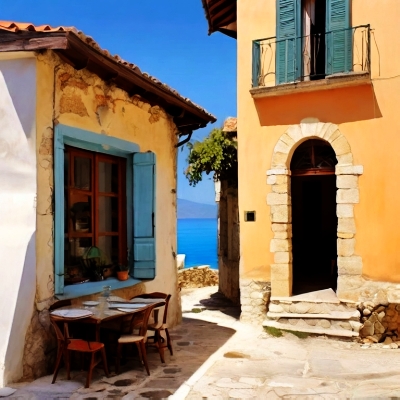
6. The Folklore Museum of Antiparos: Preserving Local Traditions and Heritage
Located in the heart of Antiparos Town, the Folklore Museum is dedicated to preserving and showcasing the island's cultural and historical Heritage. The museum houses a diverse Collection of Artifacts, including traditional clothing, household items, and agricultural tools. Through its Exhibits, visitors can gain a deeper understanding of Antiparos' local customs, traditions, and way of life.
Key Highlights:
Exhibits featuring traditional island clothing and household Artifacts.
Displays of agricultural tools and crafts used by past generations.
Insight into the island’s cultural practices and historical evolution.

Conclusion
Antiparos Island is a treasure trove of historical sites that offer a captivating journey through its rich past. From the ancient caves and medieval fortresses to Byzantine churches and archaeological Ruins, each location provides a unique perspective on the island’s Heritage. Whether you are a history buff or simply a curious traveler, exploring these historical sites will enrich your understanding of Antiparos and leave you with lasting memories of this enchanting Greek island.
For those planning a visit, make sure to allocate time to fully Experience each site and immerse yourself in the island’s historical charm. Antiparos awaits with open arms and a fascinating story to tell.
Feel free to share your own experiences and insights about Antiparos' historical sites in the comments below. Happy exploring!





